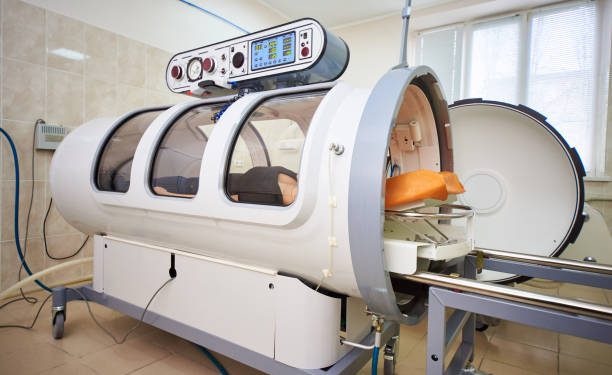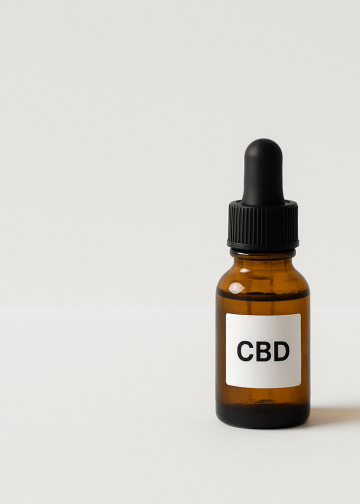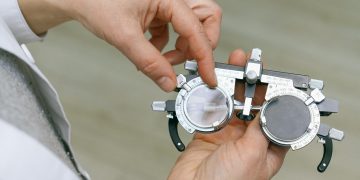Key Takeaways
- Hyperbaric Oxygen Therapy (HBOT) involves breathing pure oxygen in a pressurized chamber to promote healing and overall wellness.
- HBOT increases oxygen concentration in the body, promoting tissue regeneration, improving blood flow, and reducing inflammation.
- HBOT benefits include healing wounds and injuries, boosting athletic performance, and enhancing brain function and mental health.
- Specific conditions that may benefit from HBOT include chronic pain, autism, and stroke recovery.
- The future of HBOT includes innovations in technology, potential new applications, and integrating it into mainstream healthcare.
The Science Behind Hyperbaric Oxygen Therapy
Hyperbaric Oxygen Therapy (HBOT) is a medical treatment that involves breathing pure oxygen in a pressurized chamber. It is based on the principle that oxygen is essential for healing and promoting overall wellness. By delivering higher levels of oxygen to the body's tissues, HBOT offers a range of potential benefits for various conditions and injuries.
1. Understanding Hyperbaric Oxygen Therapy
Hyperbaric Oxygen Therapy involves immersing the patient in a chamber where the air pressure is increased to two to three times higher than normal atmospheric pressure. During the therapy session, the patient breathes pure oxygen, which allows the lungs to take in a significantly higher amount of oxygen compared to normal.
The increased pressure and oxygen levels in the chamber stimulate the body's natural healing processes, promoting the formation of new blood vessels, improving oxygen delivery to tissues, and enhancing the body's ability to fight infections and reduce inflammation.
2. How Does Hyperbaric Oxygen Therapy Work?
Hyperbaric Oxygen Therapy works by increasing the oxygen concentration in the body, which has several effects on cellular and systemic levels. Under normal atmospheric pressure, oxygen is transported through the bloodstream and delivered to tissues by red blood cells. However, in HBOT, oxygen dissolves directly into plasma and other body fluids, allowing it to diffuse more effectively to areas with compromised blood flow.
Furthermore, the increased oxygen levels promote the production of growth factors and stem cells, which play a vital role in tissue regeneration and repair. HBOT also enhances the body's immune response, combating infections and reducing inflammation. It can improve the efficacy of antibiotics and stimulate the production of substances that aid in wound healing.
3. The Biological Effects of Hyperbaric Oxygen Therapy
Hyperbaric Oxygen Therapy exerts various biological effects on the body. At the cellular level, it increases the production of adenosine triphosphate (ATP), the molecule responsible for storing and releasing energy. This enhanced energy production supports cellular processes and promotes the healing of damaged tissues.
HBOT also increases the oxygen saturation levels in tissues, even in areas with restricted or compromised blood flow. This oxygen-rich environment promotes the growth of new blood vessels, a process known as angiogenesis. Improved oxygenation and blood flow can accelerate wound healing, repair damaged tissues, and reduce the risk of infection.
In addition to its local effects, HBOT has systemic benefits. It reduces inflammation by modulating the body's immune response, leading to decreased swelling and pain. It also enhances the body's antioxidant defenses, protecting cells from oxidative stress and promoting overall cellular health.
The Benefits of Hyperbaric Oxygen Therapy
Hyperbaric Oxygen Therapy offers a range of potential benefits for various conditions and injuries. Whether it's healing wounds, enhancing brain function, or boosting athletic performance, HBOT has shown promising results in improving health and wellbeing.
1. Healing Wounds and Injuries
Hyperbaric Oxygen Therapy has been widely used in the treatment of chronic wounds, such as diabetic foot ulcers, radiation-induced tissue damage, and non-healing surgical wounds. The increased oxygen levels in the body promote tissue repair, stimulate the growth of new blood vessels, and enhance the body's natural healing processes.
Furthermore, HBOT can accelerate the healing of bone fractures, reduce the risk of infection, and improve overall surgical outcomes. It can also be beneficial for traumatic brain injuries, helping to minimize brain damage, reduce inflammation, and support neurological recovery.
2. Boosting Athletic Performance
Athletes are constantly seeking ways to improve their performance and enhance their recovery. Hyperbaric Oxygen Therapy has gained popularity in the sports world for its potential to increase endurance, accelerate muscle recovery, and improve cognitive function.
By delivering high levels of oxygen to the muscles and tissues, HBOT increases energy production and reduces the build-up of lactic acid, allowing athletes to perform at their peak for longer durations. It also promotes the repair of exercise-induced muscle damage and reduces oxidative stress, resulting in faster recovery between training sessions.
3. Enhancing Brain Function and Mental Health
Hyperbaric Oxygen Therapy has shown promise in improving brain function and addressing various mental health conditions. Studies have suggested that HBOT may have neuroprotective effects, helping to preserve brain tissue and improve cognitive function in conditions such as stroke, traumatic brain injury, and neurodegenerative disorders.
In addition to its impact on physical health, HBOT has been explored as a potential treatment for mental health conditions such as depression, anxiety, and post-traumatic stress disorder (PTSD). The increased oxygen levels and improved blood flow to the brain can have a positive effect on mood regulation, neurochemical balance, and overall psychological well-being.
Hyperbaric Oxygen Therapy for Specific Conditions
In addition to its general benefits, Hyperbaric Oxygen Therapy has shown promise in addressing specific conditions. Whether it's chronic pain, autism, or stroke recovery, HBOT may offer valuable support and potential improvements in quality of life.
1. Hyperbaric Oxygen Therapy for Chronic Pain
Chronic pain conditions can significantly impact a person's quality of life, often leading to long-term disability and emotional distress. Hyperbaric Oxygen Therapy has demonstrated potential in alleviating pain associated with conditions such as fibromyalgia, complex regional pain syndrome, and neuropathic pain.
By reducing inflammation, promoting tissue repair, and enhancing the body's natural pain-relieving mechanisms, HBOT can provide relief and improve overall function in individuals living with chronic pain.
2. Hyperbaric Oxygen Therapy for Autism
Autism spectrum disorder (ASD) is a complex neurodevelopmental condition characterized by challenges in social interaction, communication, and behavior. Hyperbaric Oxygen Therapy has been explored as a complementary treatment for individuals with autism, aiming to address underlying physiological abnormalities and support brain function.
While research on HBOT for autism is ongoing and results are mixed, some studies have reported improvements in language skills, social interaction, and overall behavior in individuals receiving HBOT. Further research and larger-scale studies are needed to fully understand the potential benefits and optimize treatment protocols.
3. Hyperbaric Oxygen Therapy for Stroke Recovery
Stroke is a leading cause of long-term disability, often resulting in motor, sensory, and cognitive impairments. Hyperbaric Oxygen Therapy has shown promise in stroke recovery, particularly in enhancing neurological function and promoting overall healing.
The increased oxygen levels delivered during HBOT can support the regeneration of damaged brain tissue, stimulate the growth of new blood vessels, and reduce inflammation. This can result in improved motor function, enhanced speech and language abilities, and better overall recovery outcomes for stroke survivors.
The Future of Hyperbaric Oxygen Therapy
As research and technology continue to advance, Hyperbaric Oxygen Therapy holds promising potential for future innovations and integrations into mainstream healthcare.
1. Innovations in Hyperbaric Oxygen Therapy
Advancements in technology have already led to the development of portable hyperbaric chambers, allowing patients to receive HBOT in the comfort of their own homes. This innovation not only increases accessibility but also expands the potential applications of HBOT, as it can be used for more frequent treatments and long-term management of chronic conditions.
Additionally, ongoing research aims to optimize treatment protocols, explore new indications for HBOT, and refine the delivery of oxygen in hyperbaric chambers. These innovations may further enhance the effectiveness and benefits of HBOT for a wide range of conditions.
2. The Potential Applications of Hyperbaric Oxygen Therapy
While Hyperbaric Oxygen Therapy has already shown promise in various fields of medicine, its potential applications are still being explored. Researchers and healthcare professionals are investigating the use of HBOT in areas such as cancer treatment, wound healing in diabetes, neurorehabilitation, and even anti-aging interventions.
As our understanding of the biological effects of HBOT expands, it is likely that new applications will emerge, offering innovative ways to harness the healing power of oxygen and improve patient outcomes.
3. Integrating Hyperbaric Oxygen Therapy into Mainstream Healthcare
Although Hyperbaric Oxygen Therapy is currently used as an adjunctive treatment for specific conditions, there is growing interest in integrating it more extensively into mainstream healthcare. The potential benefits and the increasing body of evidence supporting the effectiveness of HBOT have sparked discussions about expanding access and incorporating it into standard treatment protocols.
Efforts are being made to educate healthcare professionals about the benefits and appropriate use of HBOT, as well as to advocate for insurance coverage and reimbursement for treatment. As awareness grows and support for HBOT increases, it is likely to become more widely available and integrated into routine medical care.
Hyperbaric Oxygen Therapy offers a promising approach to enhancing healing, promoting wellness, and addressing a range of conditions. As research progresses and our understanding deepens, the potential for using HBOT to improve health outcomes and enhance quality of life continues to expand.
FAQ
Question: What is Hyperbaric Oxygen Therapy (HBOT)? – Hyperbaric Oxygen Therapy involves breathing pure oxygen in a pressurized chamber to promote healing and overall wellness.
Question: How does Hyperbaric Oxygen Therapy work? – Hyperbaric Oxygen Therapy works by increasing the oxygen concentration in the body, which promotes tissue regeneration, improves blood flow, and reduces inflammation.
Question: What are the biological effects of Hyperbaric Oxygen Therapy? – Hyperbaric Oxygen Therapy increases the production of energy molecules, promotes the growth of new blood vessels, reduces inflammation, and enhances antioxidant defenses.
Question: What are the benefits of Hyperbaric Oxygen Therapy? – Hyperbaric Oxygen Therapy can heal wounds and injuries, boost athletic performance, and enhance brain function and mental health.
Question: How can Hyperbaric Oxygen Therapy help with chronic pain? – Hyperbaric Oxygen Therapy has demonstrated potential in alleviating pain associated with conditions such as fibromyalgia, complex regional pain syndrome, and neuropathic pain.
Question: Can Hyperbaric Oxygen Therapy benefit individuals with autism? – Hyperbaric Oxygen Therapy has been explored as a complementary treatment for autism and has shown improvements in language skills, social interaction, and behavior in some individuals.
Question: Can Hyperbaric Oxygen Therapy aid in stroke recovery? – Hyperbaric Oxygen Therapy can enhance neurological function, promote healing, and improve overall recovery outcomes for stroke survivors.
Question: What is the future of Hyperbaric Oxygen Therapy? – The future of Hyperbaric Oxygen Therapy includes innovations in technology, potential new applications, and integrating it into mainstream healthcare.

























